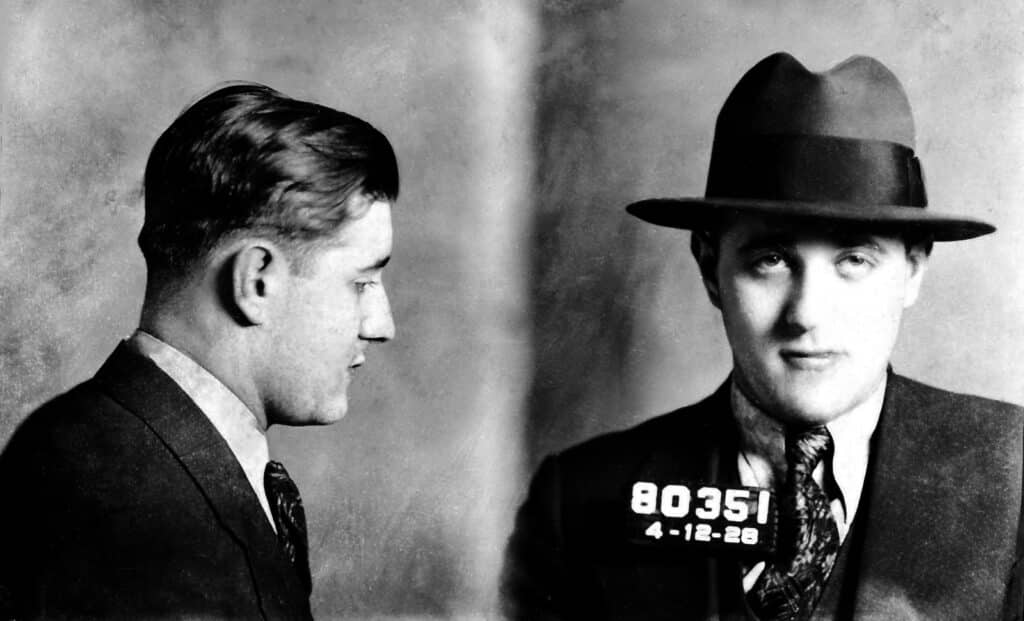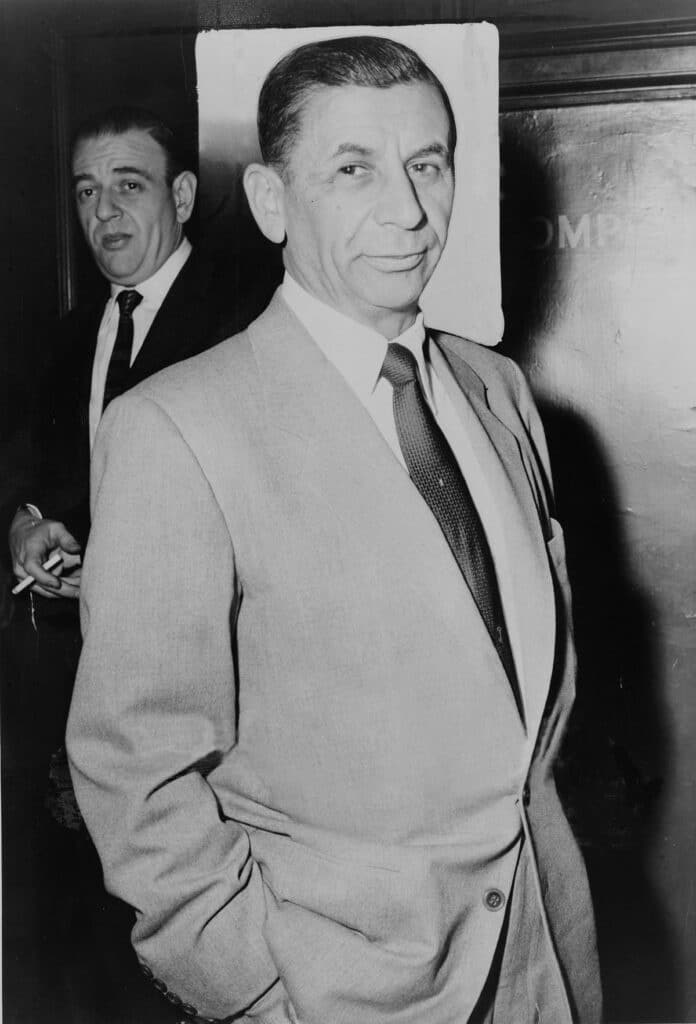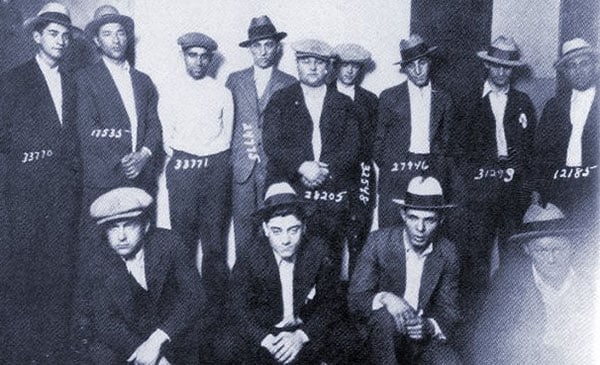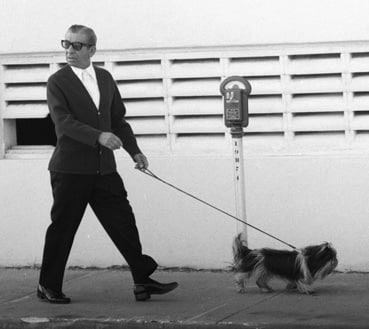Did you know that the Italian mafia wasn’t the only mob on the block? Immigrant life was tough for all minorities, and some Jews turned to a life of crime in the so-called “kosher mob.”
Despite their very not-kosher activities, they never forgot their community. They stood up against antisemitism, fought Nazis, and helped establish the State of Israel.
So, how should we feel about these Jewish mobsters? Were they heroes, monsters, or something in between?
The origins of Jewish mobsters
Jewish immigrants who fled to the U.S. in the 1800s believed they were coming to “the golden medina,” the golden country. Like many other immigrants, they thought everyone in America was rich. Plus, America was the land of the free — free of pogroms and Cossack mobs.
However, it turned out that the golden medina wasn’t entirely free of poverty and antisemitism. Most Jewish immigrants kept working toward the American Dream, paving the way for future generations, but some took violent shortcuts.
By the time significant numbers of Jews began arriving in New York, Italian and Irish gangs were already running the underworld, and Jewish mobsters were ready for a piece of the action. During the prohibition era, the U.S. government put a lot of effort into making sure that people didn’t drink.
People turned to the criminal underworld to get alcohol — for a steep price. The Jews at the forefront of the bootlegging biz were serious about protecting their turf — which meant eliminating the competition. Jewish hitmen were some of the most sought-after in the business.
Samuel “Red” Levine: The Orthodox hitman
Samuel “Red” Levine had the dubious distinction of being one of the few Orthodox hitmen in history.
Somehow, Red saw no contradiction between his job and his faith. He wore a kippah, kept kosher, and kept Shabbat. He usually refused to kill on Shabbat — but if he really had to, he would put on his tallit, pray, and then go end someone’s life.
Bugsy the Jewish mobster

“Red” is a pretty good nickname for an assassin, but nicknames aren’t everything. One of the most famous and feared Jewish gangsters was known as Bugsy.
He earned the nickname for being “crazy as a bedbug.” Bugsy’s temper meant that when there were kneecaps to be smashed and heads to be cracked, the guy turned into an absolute animal.
When a rival tried to take him out, Bugsy didn’t hold back. He snuck out of the hospital — where he was supposed to be recovering from his wounds — and hunted down his would-be assassin.
Bugsy was efficient and was back in his hospital bed before anyone knew a thing. But it didn’t take an assassination attempt to tick him off. He once shot a man for cheating at poker. Then he sat him back up and shot him again for not placing another bet.
The Bugs and Meyer mob
You might be surprised to hear that a guy like that had friends but he did: his fellow gangster and literal partner in crime, Meyer Lansky. The two grew up together on Manhattan’s Lower East Side, eventually forming the Bugs and Meyer mob.

They eventually joined forces with the Italian mob to create The National Crime Syndicate. Bugsy and Meyer were in charge of the Syndicate’s “enforcement” branch, which they called Murder, Inc.
Unsurprisingly, Bugsy was Murder, Inc.’s top guy. One detective described him as a sadist, who “got his kicks out of seeing his victims suffering, groaning, and dying.” It didn’t seem to matter that most of his victims were fellow syndicate members who stepped out of line.
As Shakespeare said, violent delights have violent ends, and Bugsy was — unsurprisingly — murdered at the age of 41. The case was never officially solved, but everyone agrees that he was killed by a fellow mobster. According to some sources, his old friend Lansky had okayed the hit.
If Bugsy was the brawn, then Lansky was the brain. He was known as the mob’s accountant, with the nerdy looks to match, but it would be a mistake to underestimate the 5-foot-4 Lansky.
According to an FBI agent, “he would have been chairman of the board of General Motors if he’d gone into legitimate business.”
How the Jewish mob fought antisemitism in the U.S.
The story of Bugsy, Meyer, and the rest of the gang doesn’t seem very complicated. They were bad guys doing bad things. But zoom in a little, and a more nuanced picture emerges — one that has everything to do with the historical context behind their life of crime.
The Jews who fled Europe for the U.S. in the late 1800s were seen as weak, afraid and unable to defend themselves. Many were careful not to rock the boat. They couldn’t shake the memories of their neighbors turning on them.
Jewish mobsters, however, had no such fear. They stood up for themselves. They showed the world that Jews weren’t weak. Some young Jews loved them for it.

In fact, Larry King described Jewish gangsters as his childhood “heroes.” That probably has something to do with the fact that Larry King was born in 1933, the year Hitler came to power.
Sure, the Jewish mob operated in the U.S., not in Europe, but Hitler’s ideas attracted plenty of Americans, many of whom were poor, desperate, and angry in the wake of the Great Depression. When people are poor, desperate, and angry, they look for someone to blame.
By 1939, there were more than 100 antisemitic organizations in the U.S. The biggest were the German-American Bund and the Silver Shirts Legion, who claimed that Jewish communists were the root of all of America’s problems. They’d march in the streets, calling for the return to a white, Christian America. Everyone knew Jews didn’t fight back — except when they did.
This was the land of the free and the home of the brave, where Jews had fled for their own safety. And they would protect that safety — even if it meant getting their hands dirty.
Horrified by the Nazis in the streets of New York, Judge Nathan D. Perlman and Rabbi Samuel S. Wise asked Meyer and his men to get involved. They told him he wasn’t allowed to kill anyone — but other than that, all bets were off.
Although Lansky would have loved to take down some Nazis, he followed the rules. He and his associates crashed Bundist meetings, where they threw Nazis out of windows and beat them bloody, chasing down anyone who tried to run. At times, the Jewish mobsters were outnumbered by hundreds, but the Bundists never stood a chance.
Lansky was far from the only Jewish mobster who was ready to smash some Nazi skulls. All around the country, mobsters were answering Perlman’s call. In Chicago, Al Capone’s Jewish right-hand man brought in Jewish boxers to break up Nazi rallies.
The Detroit Purple Gang defended the Jews of Michigan, while Bugsy Seigel and Mickey Cohen took care of business on the West Coast.
In Minneapolis, Jewish gangsters set aside their beef with each other to take on the Silver Shirts Legion. They showed up in a convoy of Cadillacs wearing brass knuckles.
Then, one of the Jewish gangsters took the stage in a blood-soaked suit and warned that next time, it would be worse. The whole ordeal lasted only 10 minutes. It took the Minneapolis Silver Shirts two more violent raids to get the message. After that, they never met publicly again.
Across the country, Jews were fighting back, and there was nothing the Nazis could do about it. The mob had government officials on their side and police in their pockets. More importantly, they had rage. Judge Perlman had offered them money to disrupt Nazi meetings, but not a single one took it.
They saw what was happening to their Jewish brothers across the ocean. Many had relatives who would be murdered within the decade. This was not a muscle-for-hire situation — it was personal.
What did the American Jewish community think of the mobsters?
Plenty of American Jews admired the mob’s fight against the Nazis, but the support only went so far. Jewish community leaders, anxious about their reputations, spoke out against the mob. Even Rabbi Wise, who had helped recruit Lansky against the Nazis, condemned him in the press.
Even hardened criminals have feelings, and Lansky’s were pretty hurt. All he wanted was respect. He’d even asked Perlman to ensure that the Jewish press wouldn’t criticize him. But Perlman couldn’t guarantee that.
Antisemitism was rising, and Jews didn’t need the mob stirring up even more hate. When the war ended, American Jewish leaders and regular Joes alike distanced themselves from the Jewish gangs.
The mob supported Israel’s War of Independence
After World War II, the Jewish community in Israel called on the mob for help.
The British had controlled the region since the end of the war, but the Jews were getting pretty tired of being told what to do. Especially because the British had set strict immigration quotas, leaving thousands of Jews to die in Europe or languish in displaced persons camps.
A representative from an underground Jewish militia turned to Bugsy. Every week until he died in 1947, he sent money to support the cause.
Fellow gangster Mickey Cohen held huge fundraisers for criminals and celebrities, raising tens of thousands of dollars in a single night. It all went straight to the underground Jewish militias in Palestine.
The Jewish mob sent more than just money. They sent desperately needed weapons. The United States had imposed an arms embargo against the Middle East — but what was an embargo to a former bootlegger like Meyer Lansky? He and his mob controlled the New York harbors, which quickly became a hub for illegal weapons smuggling to Palestine.

When the IRS hit Lansky with federal charges in 1970, he fled to Israel, but he was deported two years later, which broke his heart. His wish to be buried next to his father in Jerusalem would never come true.
The complex legacy of Jewish mobsters
The age of the American Jewish mob is over, but the same can’t be said for the fight of Jews around the world.
Nowadays, we don’t need gangsters to fight for us. We have a sense of Jewish strength and pride — one that is rooted in thousands of years of Jewish values.
The Jewish refugees who came to the U.S. fled their homes in search of dignified lives, but Jewish gangsters were seeking more than just dignity. They sought power, confusing might for right and violence for strength.
Ultimately, these choices cost them everything. Figures like Lansky and Seigel are a cautionary tale — a warning to all of us that power should be wielded carefully.
